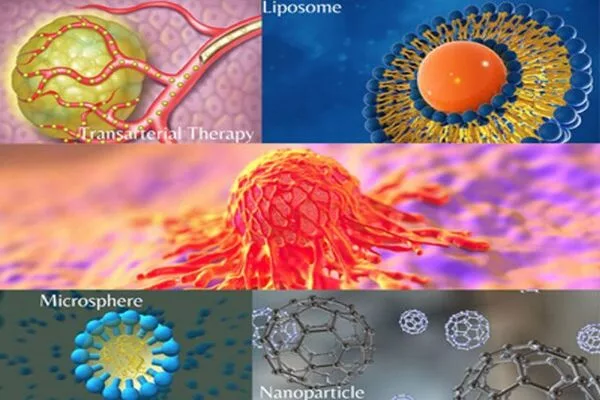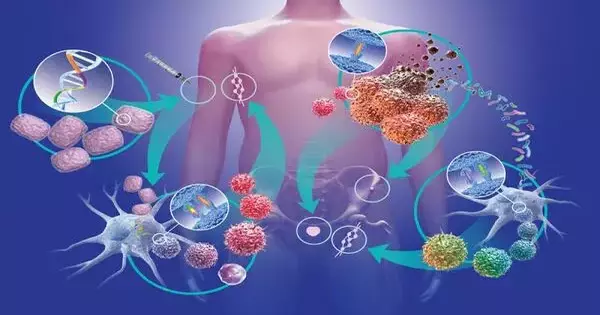Drug delivery systems are critical in cancer treatment because they ensure that drugs reach their target cells while reducing negative effects on healthy tissues. Biomedical engineers created a new hydrogel-based delivery system that balances the acidic environment in a tumor and significantly increases the cancer-fighting efficacy of the chemotherapy medication doxorubicin.
In lab studies, a team of biomedical engineers from Brown University created a new hydrogel-based delivery method that balances the acidic environment in a tumor and dramatically improves the cancer-fighting efficacy of the chemotherapeutic drug it encapsulates.
The injectable hydrogel technology functions as a buffer for the medicine doxorubicin and directly delivers it to malignant tumors, reducing undesired side effects that occur when the drug is not delivered directly in the targeted spot. The hydrogel, which was intended to balance pH levels, has the potential to significantly improve chemotherapy treatments and minimize the danger of aggressive cancers spreading in the body by neutralizing acid levels in tumors, according to the researchers.
The in vitro work is described in ACS Applied Materials and Interfaces.
What we’re trying to do is to develop a method to locally deliver doxorubicin but also mitigate acidosis at the same time. To do this, we created an injectable hydrogel where we combined the delivery of the chemotherapeutic doxorubicin with something to combat the acidic pH in the local region.
Zahra Ahmed
“At its core, the research is about mitigating some of the critical problems that we face in cancer treatment,” said Zahra Ahmed, lead study author and a Ph.D. student in the Brown lab of Assistant Professor of Engineering Vikas Srivastava.
According to Ahmed and Srivastava, various factors can have a negative impact on patient prognosis and chemotherapeutic efficacy in the tumor microenvironment. One of the most serious issues is acidosis, which occurs when the tumor environment becomes more acidic and pH values fall.
This raises the likelihood of metastasis, or cancer spreading to other regions of the body, in cancer patients. It also lowers the efficiency of chemotherapeutics substantially. For example, doxorubicin, one of the most widely used chemotherapeutics today, undergoes ion trapping in acidic environments. Essentially, the acidic environment surrounding the cells traps the medicine, preventing it from penetrating inside and killing the cancer cells.
Doxorubicin is poisonous, and when taken intravenously, it does not distinguish between cancer cells and non-cancerous healthy cells, resulting in serious adverse effects. These difficulties are exacerbated by the fact that there is currently no mechanism for directly balancing acidic pH levels in malignant tumors.
This is where the hydrogel the team engineered comes in.

“What we’re trying to do is to develop a method to locally deliver doxorubicin but also mitigate acidosis at the same time,” Ahmed said. “To do this, we created an injectable hydrogel where we combined the delivery of the chemotherapeutic doxorubicin with something to combat the acidic pH in the local region. In this case, we used sodium bicarbonate, a chemical compound that is commonly used to treat acid indigestion.”
Initial in vitro lab experiments on breast cancer cells demonstrate that the approach works. The hydrogel functions as a buffer, increasing the pH level with sodium bicarbonate, which increases the chemotherapeutic potency of doxorubicin in killing cancer cells by a factor of two to three.
For more than three years, Srivastava’s research team has been working on the project. He characterized the research as a step-by-step process once they began investigating pH regulation in the acidic tumor microenvironment.
“When we had success with pH regulation using hydrogels, which has been shown to reduce metastasis in certain cancers, we then began figuring out how to get a sodium bicarbonate delivery system to a precise tumor location,” said Srivastava, whose lab at Brown’s School of Engineering conducts research in solid mechanics, soft materials, and mechanobiology. “We created an injectable hydrogel that can be delivered locally and can regulate the pH of the tumor environment.” We then wondered if we could also give a chemotherapeutic at the same time. Can we use the same delivery vehicle to deliver doxorubicin locally? We’ve now combined all of these efforts to great effect, yielding extremely encouraging in vitro results on two cancer cell lines.”
Because of their expanding popularity and versatility, the researchers decided to create a biocompatible hydrogel as their delivery mechanism. Hydrogels, for example, are utilized in the production of contact lenses, hygiene products, drug releases, and medical dressings. The researcher’s developed hydrogel system can be stored at 4 degrees Celsius for extended periods of time until usage, making it suitable for practical medical use.
The team wants to employ its combination pH regulating and therapeutic delivering hydrogel system in pre-clinical settings, progressing from tests in test tubes to experiments in animals, and finally to human patients.
















